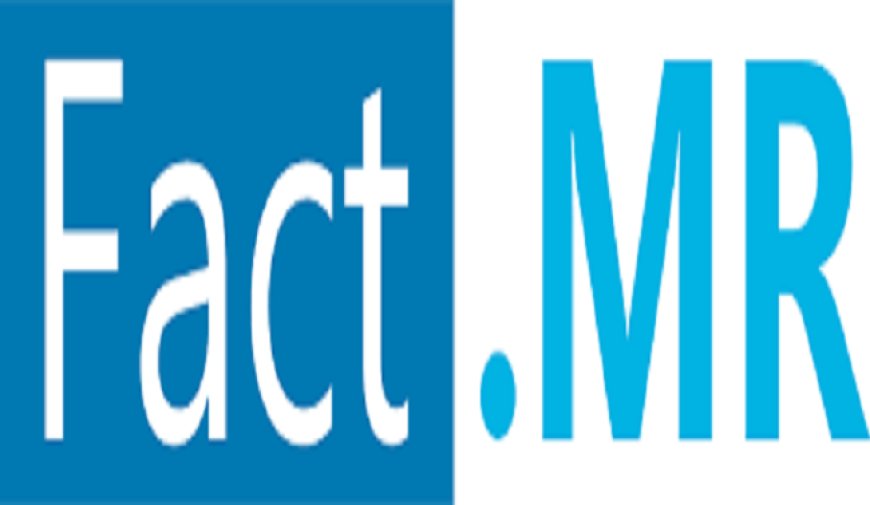Antioxidants and Stabilizers Key to Enhancing Shelf Life in Packaging Additives
The global packaging additive market is projected to generate revenue of US$ 574.8 million in 2024 and is expected to grow at a CAGR of 4.5%, reaching US$ 892.6 million by 2034.

The global packaging additive market is projected to generate revenue of US$ 574.8 million in 2024 and is expected to grow at a CAGR of 4.5%, reaching US$ 892.6 million by 2034.
Packaging additives play a crucial role in enhancing the performance, appearance, and functionality of packaging materials. These additives are incorporated into various packaging formats, including plastics, glass, and metals, to improve properties such as durability, flexibility, barrier protection, color stability, and resistance to UV degradation. Packaging additives are used across several industries, including food and beverage, pharmaceuticals, consumer goods, and electronics. As the demand for more sustainable, functional, and visually appealing packaging increases, the global packaging additive market continues to expand.
Market Insights
The packaging additive market is influenced by key trends such as the growing demand for sustainable packaging solutions and innovations in material science. Packaging additives include a wide range of chemical agents such as antioxidants, UV stabilizers, slip agents, and plasticizers, each designed to enhance the functionality of the base materials. Increasing consumer awareness of environmental issues has led to a surge in the adoption of bio-based and biodegradable packaging additives. Additionally, the development of active and intelligent packaging technologies is changing the landscape of the industry. Active additives, such as oxygen scavengers and moisture regulators, are used to extend product shelf life, while intelligent packaging additives enable real-time monitoring of product quality.
Future Outlook
The future of the packaging additive market looks promising, with a steady increase in demand anticipated in the coming years. As the global packaging industry evolves to meet both consumer and environmental needs, packaging additives will continue to play a pivotal role in enabling better product protection, longer shelf life, and more efficient production processes. The focus on reducing environmental impact is expected to lead to the further development of eco-friendly packaging additives, such as plant-based antioxidants and non-toxic stabilizers. Technological advancements, including the use of nanomaterials in packaging additives, are expected to bring about significant improvements in the performance of packaging materials.
Dynamics and Growth Factors
Several factors contribute to the dynamic growth of the packaging additive market. The increasing global consumption of packaged goods, particularly in emerging economies, is driving demand for more advanced and functional packaging solutions. Packaging additives help meet the growing need for products that are lightweight, durable, and safe for consumers. Furthermore, the rapid growth of e-commerce has led to a greater need for packaging solutions that can withstand transportation stresses and provide adequate protection. The continued shift toward sustainability, coupled with stricter regulations on plastic waste and packaging materials, is driving the demand for eco-friendly packaging additives, creating new opportunities for innovation and product development.
List of Key Companies Profiled in The Report
- BASF SE
- Evonik
- Croda International PLC
- ADEKA Corporation
- Corbion
- Dow
- Ampacet Corporation
- Others
Recent Industry News
Recent developments in the packaging additive market focus heavily on innovation and sustainability. Companies are increasingly incorporating bio-based and biodegradable additives into their packaging solutions to meet growing consumer demand for eco-friendly products. For instance, some manufacturers have introduced packaging additives made from renewable resources, such as plant-based materials, to reduce reliance on petroleum-based chemicals. Additionally, the rise in consumer awareness about the environmental impact of packaging waste has prompted packaging manufacturers to adopt additives that improve the recyclability and biodegradability of materials. Innovations in active packaging solutions, such as freshness-preserving additives and moisture-absorbing technologies, are also gaining traction, especially in the food and beverage sector.
Notable Developments
Notable developments in the packaging additive market include collaborations between packaging manufacturers and research institutions to develop advanced additives that improve packaging performance and sustainability. Recent partnerships have focused on creating materials with enhanced barrier properties, improved durability, and lower environmental impact. Several companies have launched products incorporating smart additives that respond to external conditions like temperature and humidity to ensure the preservation of packaged goods. Furthermore, the growing use of nanotechnology in packaging additives is helping to create packaging materials with superior properties, such as enhanced strength, transparency, and resistance to UV light. In response to consumer demands for more sustainable products, many companies are also investing heavily in research to develop additives that reduce the overall carbon footprint of packaging materials.
Competitive Landscape
In the competitive packaging additive market, leading companies are focusing on innovation, investing heavily in R&D to develop advanced additives that enhance functionality and performance. They are adapting to trends like packaging adhesives and coatings, while also addressing the growing demand for sustainable and eco-friendly solutions. For instance, in April 2021, Avient Corporation introduced CESA Nofog Plus, an antifog ingredient for food packaging, which helps extend shelf life by reducing moisture buildup. This move reflects the opportunities for newcomers as the market increasingly prioritizes environmental benefits.












